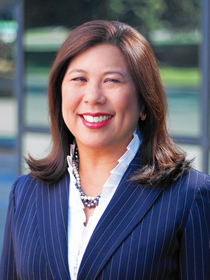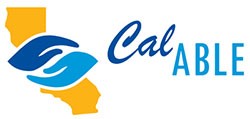You can also view this newsletter as a PDF.

CalABLE Program Gives People with Disabilities
Opportunity to Save without Risking Key Services
For decades, people with disabilities and their families faced a conundrum: If they saved enough for the necessary care and supports, they risked becoming ineligible for some of the means-tested programs they need to maintain their independence.
In 2014, the federal Stephen Beck Jr. Achieving a Better Life Experience (ABLE) Act passed with overwhelming bipartisan support, giving states the authority to launch tax-advantaged savings and investment programs for people with disabilities. It is widely regarded as the most significant legislation affecting the disability community since the Americans with Disabilities Act of 1990.

In 2015, California Governor Jerry Brown signed the California ABLE Act into law, establishing the state’s 529A Qualified ABLE Program – CalABLE – and the California ABLE Act Board on which Controller Yee serves. This opened up life-improving opportunities for people with disabilities and their families.
ABLE accounts allow individuals with disabilities to save and invest money without losing eligibility for certain means-tested public benefits programs, like Medicaid and Social Security Income. Earnings in an ABLE account are not subject to federal or California state income tax as long as they are used for qualified disability expenses.
An eligible individual under CalABLE is someone who developed a disability before the age of 26. The individual must have been living with the disability for at least one year; or they must expect the disability to last for at least a year.
Savings in a CalABLE account can be used for many different disability-related expenses, such as education, employment support, housing, transportation, assistive technology, and healthcare. A CalABLE account lets a participant save emergency funds that help to enhance independence.
A CalABLE account can function like a checking or savings account. Individuals who plan to use their money short-term, such as for basic living expenses, may elect to enroll in CalABLE’s FDIC-Insured Portfolio for this purpose.
 A CalABLE account also can be set up as a long-term investment account, where a participant will have the ability to invest money in a range of options that suits one's particular risk appetite while helping to achieve financial goals.
A CalABLE account also can be set up as a long-term investment account, where a participant will have the ability to invest money in a range of options that suits one's particular risk appetite while helping to achieve financial goals.
Nationwide, 43 states and the District of Columbia have launched ABLE programs. Approximately $642 million has been saved in more than 82,000 ABLE accounts.
Among states that report their accounts and assets, California’s CalABLE program – which just officially opened its doors as a standalone program in December 2018 – ranks fourth in assets under management, totaling $60.3 million as of the third quarter of 2021; and fifth in total accounts at 6,473.
Recognizing the age-at-onset-of-disability requirement contained in the ABLE Act limits the reach of the program, Senators Bob Casey (D-PA) and Jerry Moran (R-KS), and Representatives Tony Cardenas (D-CA), Judy Chu (D-CA), and Cathy Morris Rodgers (R-WA) have introduced the ABLE Age Adjustment Act. This legislation would allow people who acquired their disability before the age of 46 to open an ABLE account. It is estimated this expansion would provide program access to more than six million more adults with disabilities, including one million military veterans.
California's 2021 Wildfires Cross Sierra,
Defying Conventional Wisdom
California’s 2021 wildfire season has not been the state’s largest, or its most deadly. In 2020, more than 4.2 million California acres were ravaged by wildfire. Unmatched human devastation occurred in 2018, as 100 lives were lost in the Butte County town of Paradise and elsewhere.
As of November 8, the California Department of Forestry and Fire Protection reported 8,367 wildfires had burned nearly 3.1 million acres in the state in 2021, a figure that includes fire incidents on U.S. Forest Service land. Three lives were reported lost in these wildfires.
The numbers themselves do not set any records, but changing wildfire conditions have continued to create alarming new “firsts.”
It was a long-held belief several factors in the upper Sierra provided a natural barrier that would prevent wildfires from crossing into the Lake Tahoe region. At high elevation, trees and vegetation that provide fuel to fires are sparse, and the residual moisture left behind by the snowpack leaves cooler, damper conditions. If all else failed, the iconic granite of Echo Summit was seen as the ultimate last line of defense for South Lake Tahoe.
In April, when California’s snowpack is usually at its deepest, the Department of Water Resources reported it was at just 59 percent of average. As Scientific American explains, a lackluster winter was followed by the hottest California summer in 127 years of recorded history, setting the stage for what was once thought impossible.
In August, California’s two largest fires of 2021 – the Dixie Fire and the Caldor Fire – both crossed the Sierra Nevada’s “wall of granite” in the span of a few weeks. The entire city of South Lake Tahoe had to be evacuated, creating a ghost town on what, in “normal” years, would have been a bustling Labor Day weekend. Firefighters fought valiantly and stopped the fire’s march into town. However, hotels, restaurants, and other local businesses faced economic disappointment from shuttering during the final weeks of summer.
 West of Echo Summit, fire tore through Sierra-at-Tahoe ski resort in Twin Bridges, sparing the main buildings but causing damage to trees and ski lifts. The resort has announced it does not expect to re-open in 2021.
West of Echo Summit, fire tore through Sierra-at-Tahoe ski resort in Twin Bridges, sparing the main buildings but causing damage to trees and ski lifts. The resort has announced it does not expect to re-open in 2021.
It is notoriously difficult to quantify the full cost of wildfires. For example, a report from the U.S. Census Bureau says the damage total for California’s deadly 2018 fire season was “at least” $267 million, but that only includes insured property damage and fire suppression costs.
In 2020, a research team put the total economic cost of California’s 2018 wildfire season at $148.5 billion. That amount includes capital losses, health costs, and indirect losses, with nearly a third of indirect losses occurring outside of California. Out-of-state indirect costs are attributed in large part to disruptions to the supply chain, as well as lost productivity due to poor air quality in regions hundreds of miles from an actual fire.
At the local level, some costs related to business and hotel closures in a tourist-dependent community like South Lake Tahoe are more easily measured. South Lake Tahoe reported almost $40.9 million in tax revenue to the State Controller’s Office in 2020, and $44.8 million in tax revenue in 2019, the last full year before the pandemic. Even in a year affected by COVID-19 restrictions, South Lake Tahoe anticipated $40.5 million in General Fund revenues in its Fiscal Year 2020-21 budget, with 31 percent of those GF revenues from transient occupancy (hotel) taxes, and another 13 percent from sales taxes. Many visits were cancelled due to heavy smoke even before evacuations were ordered.
Just across the border in Nevada, South Lake Tahoe gaming revenues were down 69 percent in September 2021 from September 2019, highlighting the magnitude of the economic losses.
According to Scientific American, for every degree Celsius of warming, the air can absorb 7 percent more water, exacerbating dry fire conditions that already have extended the average California fire season by 75 days. Focused action on climate and forest management both are critical to curbing that trend.
In April, the Legislature passed a $536 million early action package to invest in forest health and fire prevention ahead of wildfire season. The FY 2021-22 California Budget Act includes another $988 million for wildfire and forest resiliency projects.
In September, Governor Gavin Newsom signed into law a package of natural resources bills that will invest an additional $15 billion over three years into climate resiliency, including a $1.5 billion wildfire and forest resiliency package.